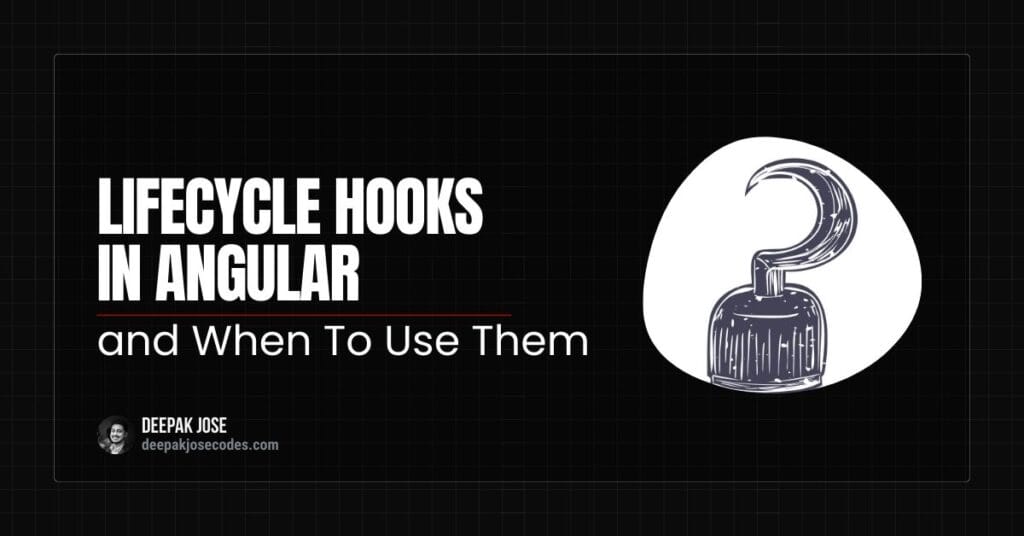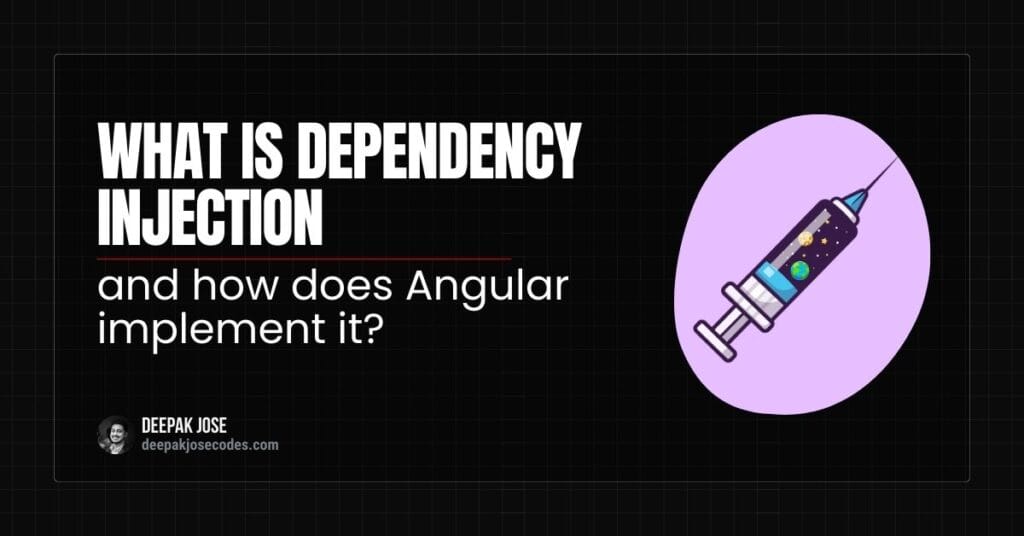Introduction
Angular provides lifecycle hooks that allow developers to execute logic at specific moments in a component’s lifecycle. Understanding these hooks is crucial for writing efficient, optimized, and well-structured Angular applications. In this article, we will explore each lifecycle hook in detail, discuss its purpose, and provide real-world scenarios where each can be applied.
Angular Component Lifecycle Overview
Angular components go through a series of lifecycle events from initialization to destruction. The lifecycle consists of the following hooks, in order of execution:
- ngOnChanges()
- ngOnInit()
- ngDoCheck()
- ngAfterContentInit()
- ngAfterContentChecked()
- ngAfterViewInit()
- ngAfterViewChecked()
- ngOnDestroy()
Each of these hooks serves a specific purpose and is called at a particular phase of the component’s lifecycle.
1. ngOnChanges(changes: SimpleChanges)
Triggered: Before ngOnInit(), and whenever an @Input() property changes.
Use Cases:
- Detecting changes in
@Input()properties from the parent component. - Reacting to input changes by fetching new data or modifying component behavior.
Example:
import { Component, Input, OnChanges, SimpleChanges } from '@angular/core';
@Component({
selector: 'app-child',
template: `<p>Data: {{ data }}</p>`
})
export class ChildComponent implements OnChanges {
@Input() data: string;
ngOnChanges(changes: SimpleChanges) {
if (changes['data']) {
console.log('data changed:', changes['data'].currentValue);
}
}
}
2. ngOnInit()
Triggered: Once after the first ngOnChanges(), when the component is initialized.
Use Cases:
- Performing component initialization logic.
- Fetching initial data from an API.
- Setting up subscriptions or event listeners.
Example:
import { Component, OnInit } from '@angular/core';
@Component({
selector: 'app-example',
template: `<p>Data loaded: {{ data }}</p>`
})
export class ExampleComponent implements OnInit {
data: string;
ngOnInit() {
this.data = 'Fetching initial data...';
}
}
3. ngDoCheck()
Triggered: During every change detection cycle, even if @Input() properties do not change.
Use Cases:
- Implementing custom change detection logic.
- Detecting deep object changes.
Example:
import { Component, DoCheck } from '@angular/core';
@Component({
selector: 'app-check',
template: `<p>Check count: {{ count }}</p>`
})
export class CheckComponent implements DoCheck {
count = 0;
ngDoCheck() {
this.count++;
console.log('Change detection triggered', this.count);
}
}
4. ngAfterContentInit()
Triggered: Once after Angular projects external content into the component.
Use Cases:
- Running logic when projected content (e.g.,
<ng-content>) is initialized.
Example:
import { Component, AfterContentInit } from '@angular/core';
@Component({
selector: 'app-content',
template: `<ng-content></ng-content>`
})
export class ContentComponent implements AfterContentInit {
ngAfterContentInit() {
console.log('Projected content initialized');
}
}
5. ngAfterContentChecked()
Triggered: After ngAfterContentInit() and every subsequent change detection cycle.
Use Cases:
- Responding to changes in projected content.
Example:
import { Component, AfterContentChecked } from '@angular/core';
@Component({
selector: 'app-content-check',
template: `<ng-content></ng-content>`
})
export class ContentCheckComponent implements AfterContentChecked {
ngAfterContentChecked() {
console.log('Projected content checked');
}
}
6. ngAfterViewInit()
Triggered: Once after the component’s view (including child components) is initialized.
Use Cases:
- Interacting with child components using
@ViewChild(). - Initializing third-party libraries that depend on the DOM.
Example:
import { Component, AfterViewInit, ViewChild, ElementRef } from '@angular/core';
@Component({
selector: 'app-view',
template: `<div #myElement>Hello World</div>`
})
export class ViewComponent implements AfterViewInit {
@ViewChild('myElement') myElement: ElementRef;
ngAfterViewInit() {
console.log('View initialized', this.myElement.nativeElement);
}
}
7. ngAfterViewChecked()
Triggered: After ngAfterViewInit() and every subsequent change detection cycle.
Use Cases:
- Performing operations that require the view to be fully rendered.
Example:
import { Component, AfterViewChecked } from '@angular/core';
@Component({
selector: 'app-view-check',
template: `<p>View Checked</p>`
})
export class ViewCheckComponent implements AfterViewChecked {
ngAfterViewChecked() {
console.log('View checked');
}
}
8. ngOnDestroy()
Triggered: Just before the component is destroyed.
Use Cases:
- Unsubscribing from observables.
- Cleaning up event listeners.
Example:
import { Component, OnDestroy } from '@angular/core';
@Component({
selector: 'app-destroy',
template: `<p>Destroy example</p>`
})
export class DestroyComponent implements OnDestroy {
ngOnDestroy() {
console.log('Component is being destroyed');
}
}
Conclusion
Understanding Angular lifecycle hooks helps developers write efficient and bug-free applications. Properly using these hooks allows for optimized data fetching, memory management, and event handling. By leveraging these hooks effectively, developers can improve application performance and maintainability.



